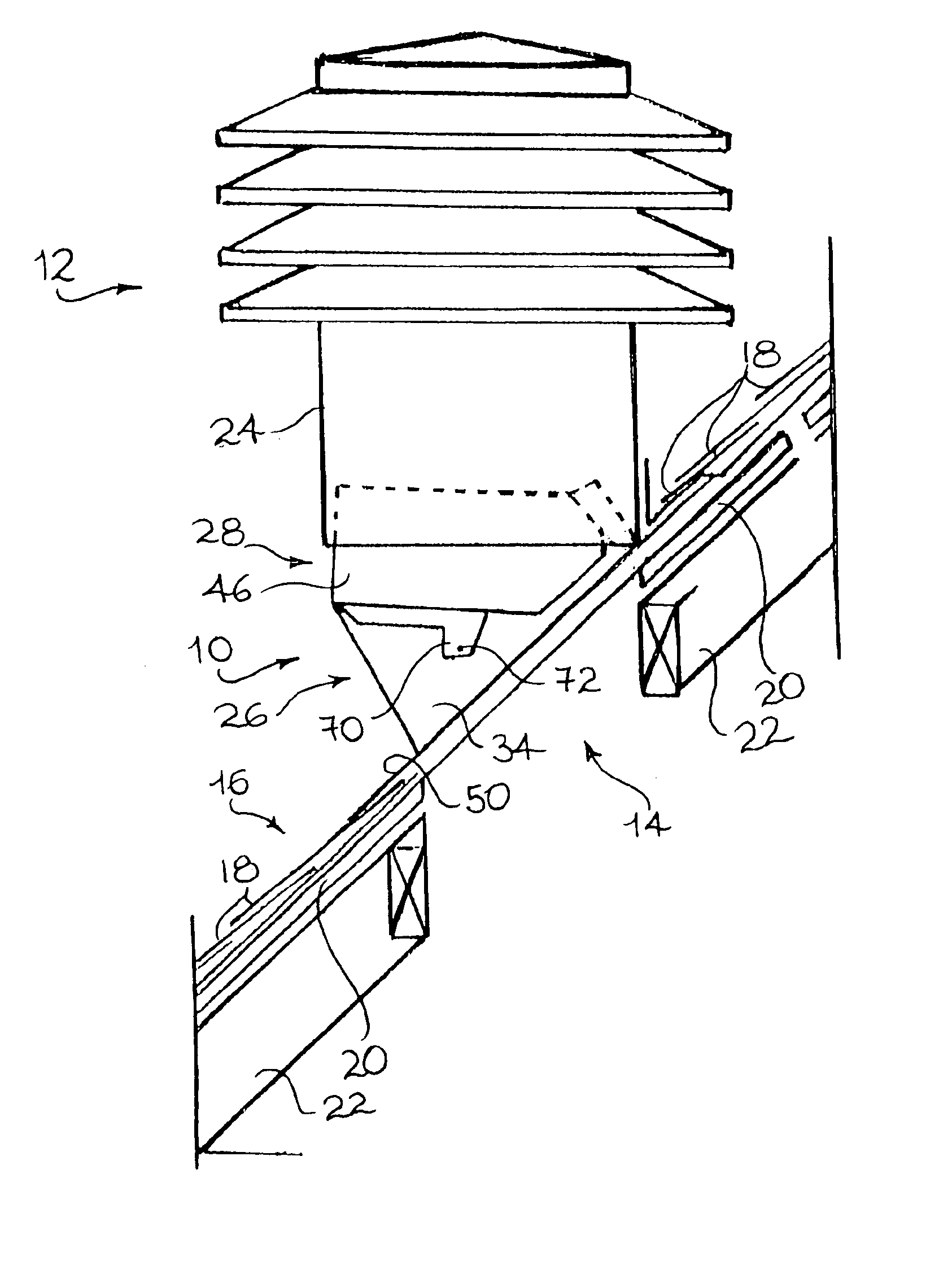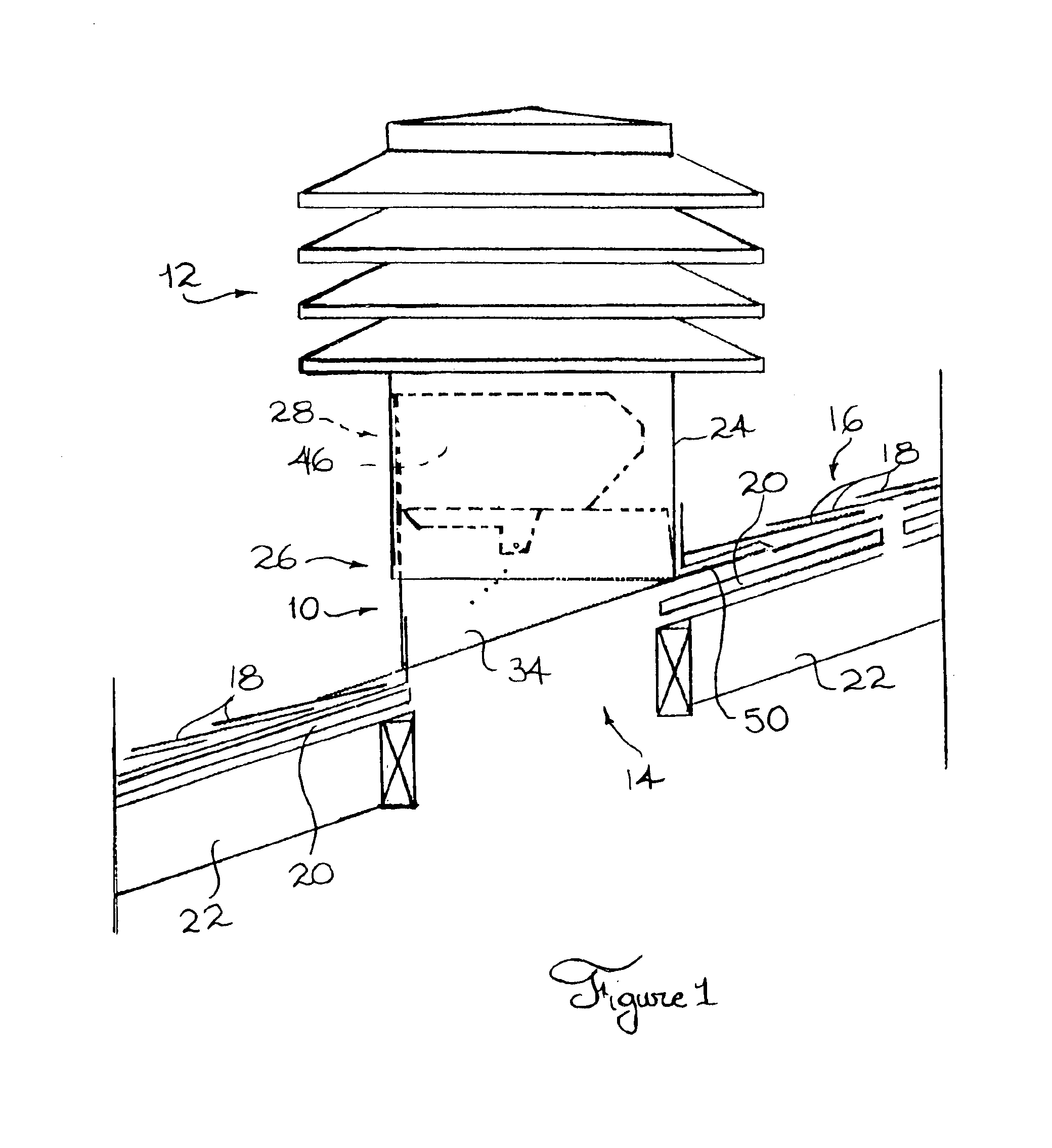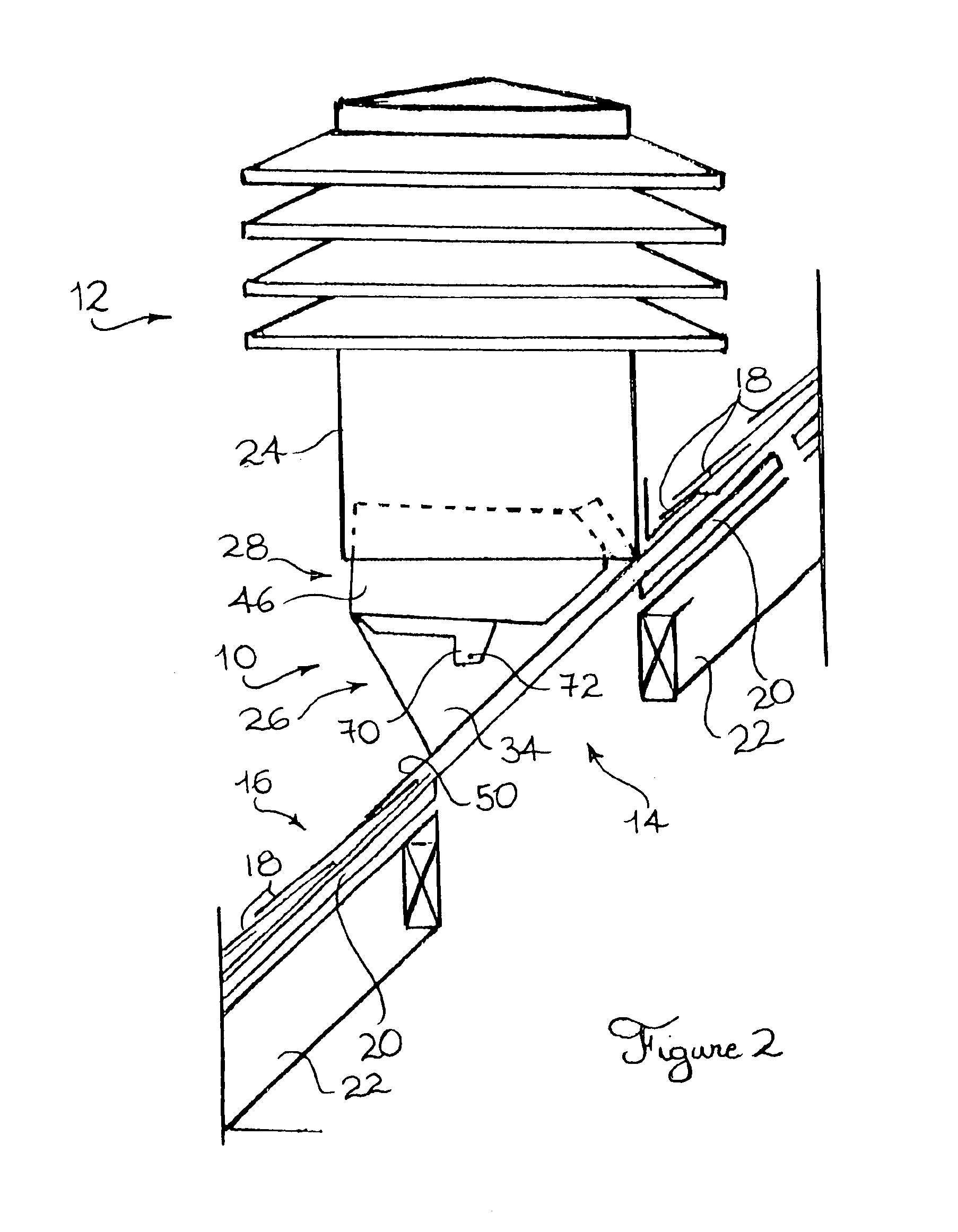Adjustable roof ventilator jack
a ventilator and adjustable technology, applied in ventilation systems, domestic stoves or ranges, heating types, etc., can solve the problems of reducing the insulation affecting the efficiency of the insulation, and one of the most common energy losses in the building
- Summary
- Abstract
- Description
- Claims
- Application Information
AI Technical Summary
Benefits of technology
Problems solved by technology
Method used
Image
Examples
Embodiment Construction
[0035]Referring to FIGS. 1 and 2, there is shown an adjustable roof ventilator jack in accordance with an embodiment of the present invention generally designated by the reference numeral 10. The jack 10 is shown operationally coupling a roof ventilator 12 to a venting aperture 14 extending through a roof 16. The jack 10 is particularly well-suited for use on a roof having a sloped roof section adjacent the venting aperture 14.
[0036]FIGS. 1 and 2 illustrate situations wherein the jack 10 is mounted on roofs 16 having respectively a less and a more pronounced slope. It should be understood that the roof slopes illustrated in FIGS. 1 and 2 are only shown by way of example and that the jack 10 could be used with roofs having other slope values without departing from the scope of the present invention.
[0037]In FIGS. 1 and 2, the venting aperture 14 establishes fluid communication between an interior volume such as an attic and an external environment such as the exterior of a building. ...
PUM
 Login to View More
Login to View More Abstract
Description
Claims
Application Information
 Login to View More
Login to View More - R&D
- Intellectual Property
- Life Sciences
- Materials
- Tech Scout
- Unparalleled Data Quality
- Higher Quality Content
- 60% Fewer Hallucinations
Browse by: Latest US Patents, China's latest patents, Technical Efficacy Thesaurus, Application Domain, Technology Topic, Popular Technical Reports.
© 2025 PatSnap. All rights reserved.Legal|Privacy policy|Modern Slavery Act Transparency Statement|Sitemap|About US| Contact US: help@patsnap.com



